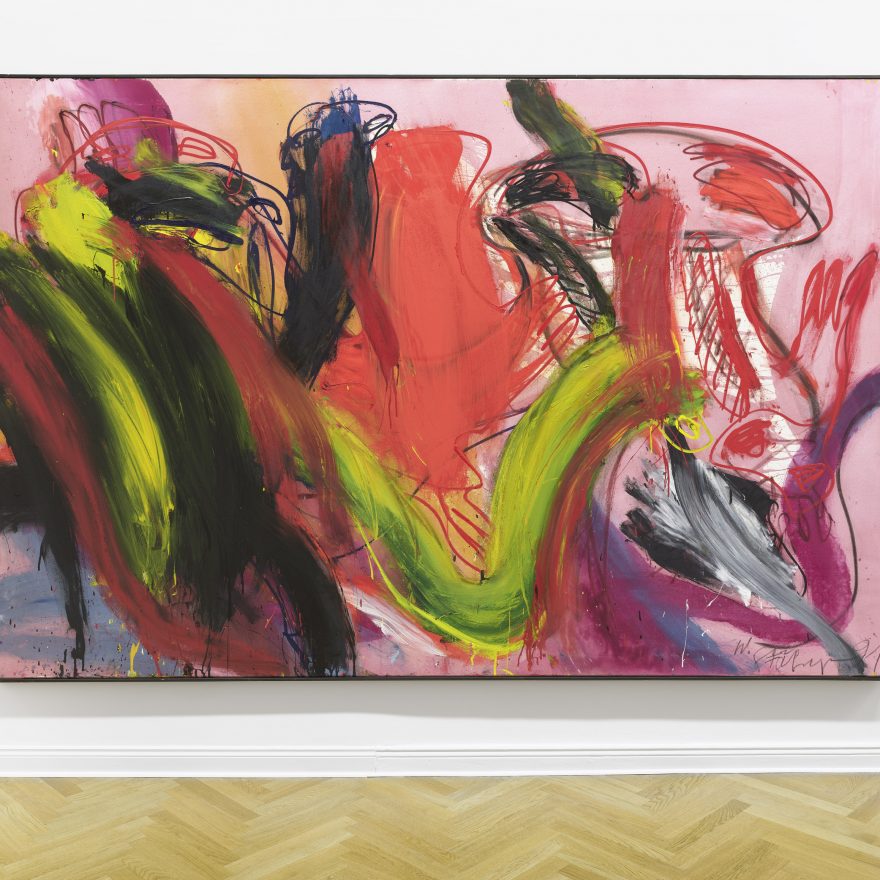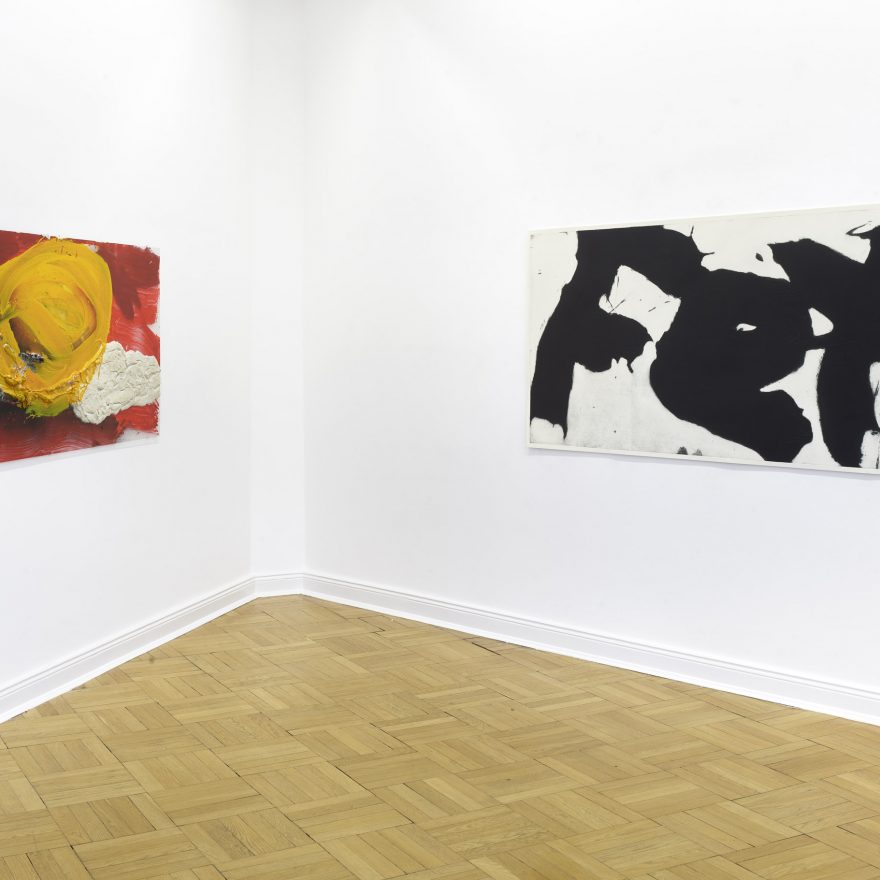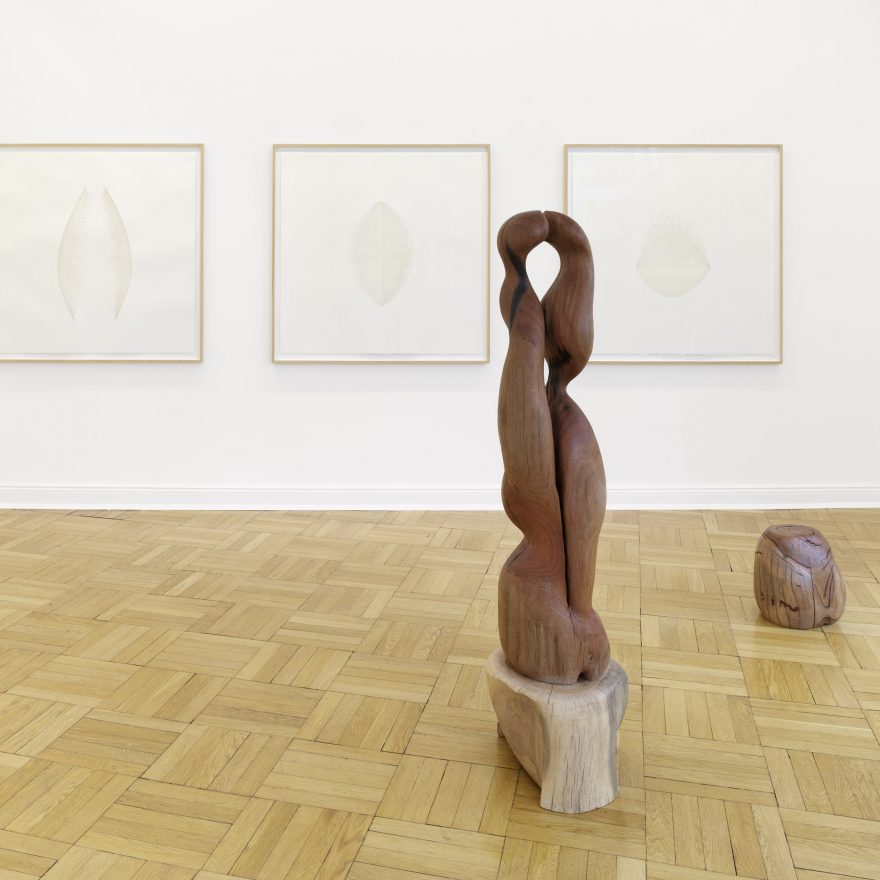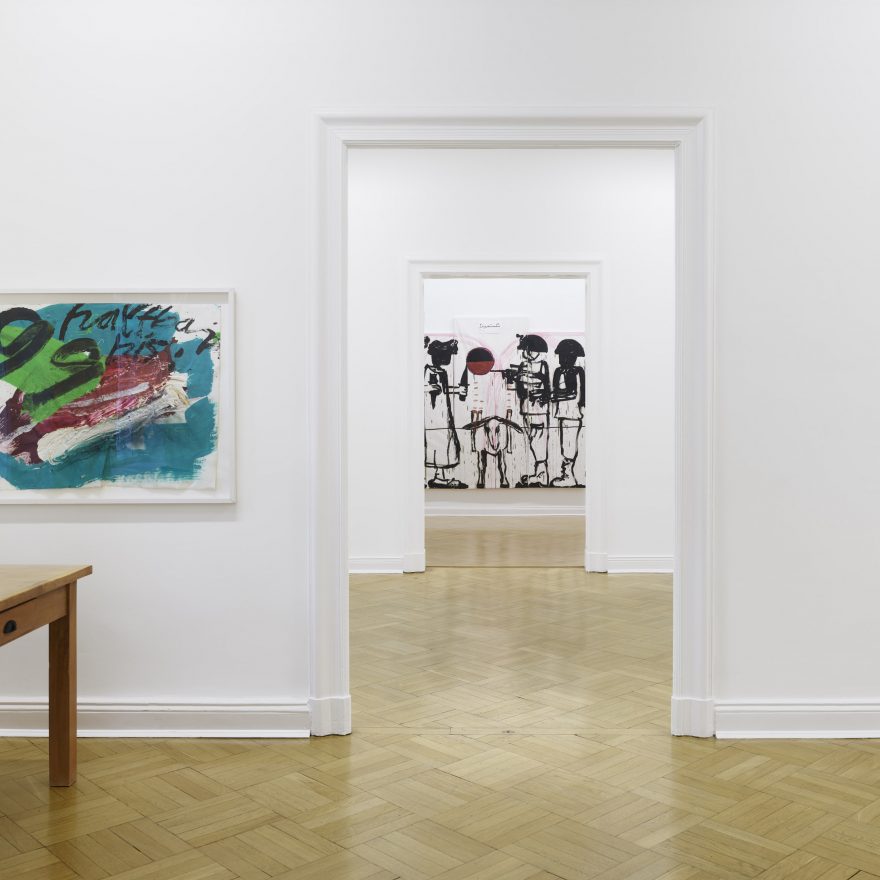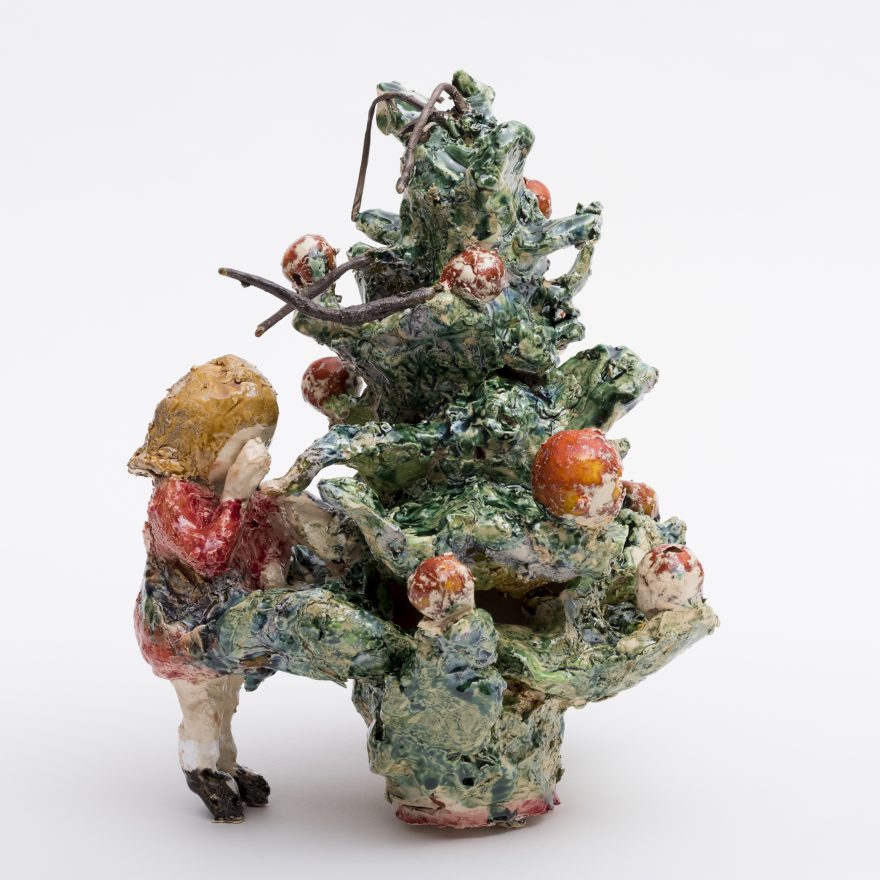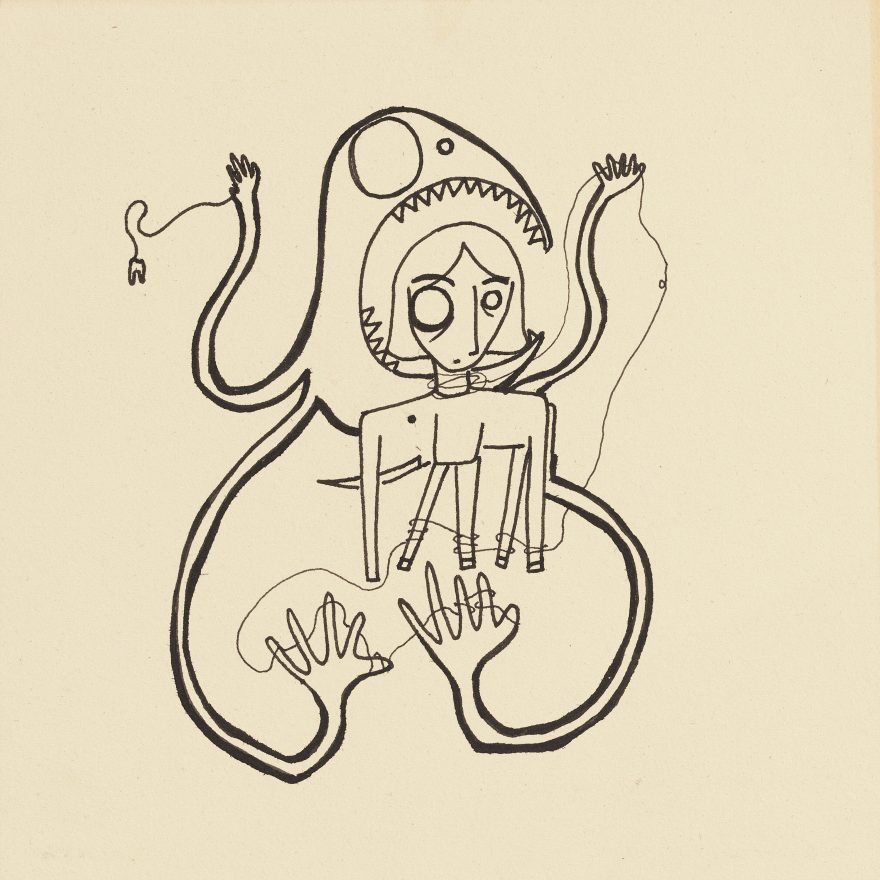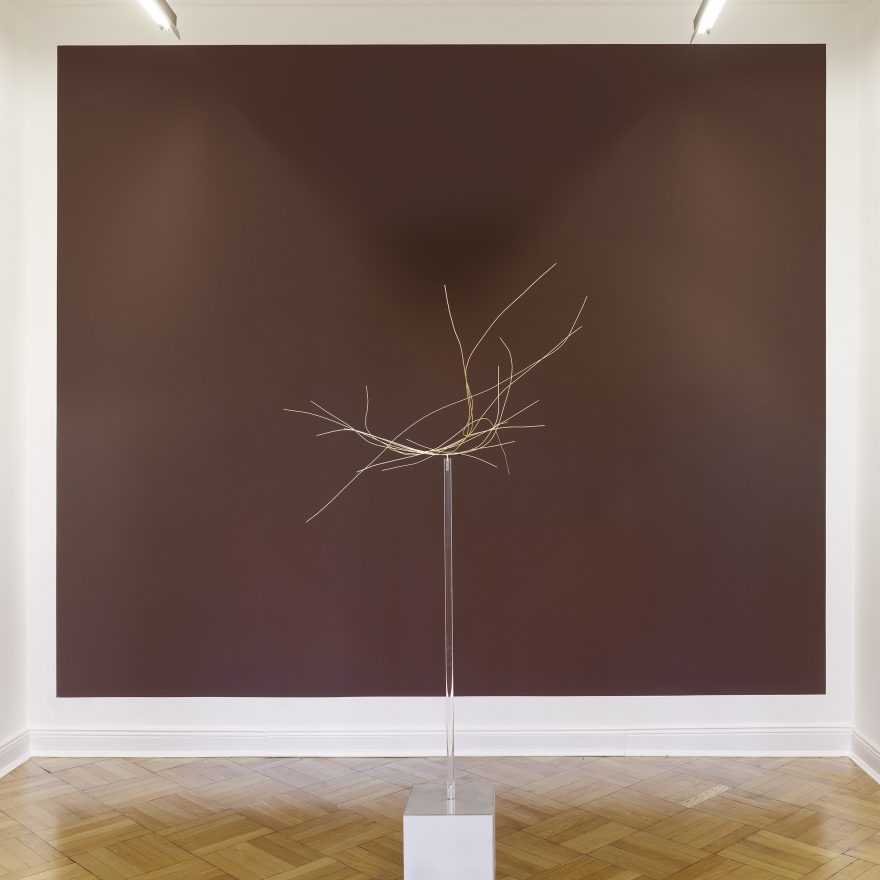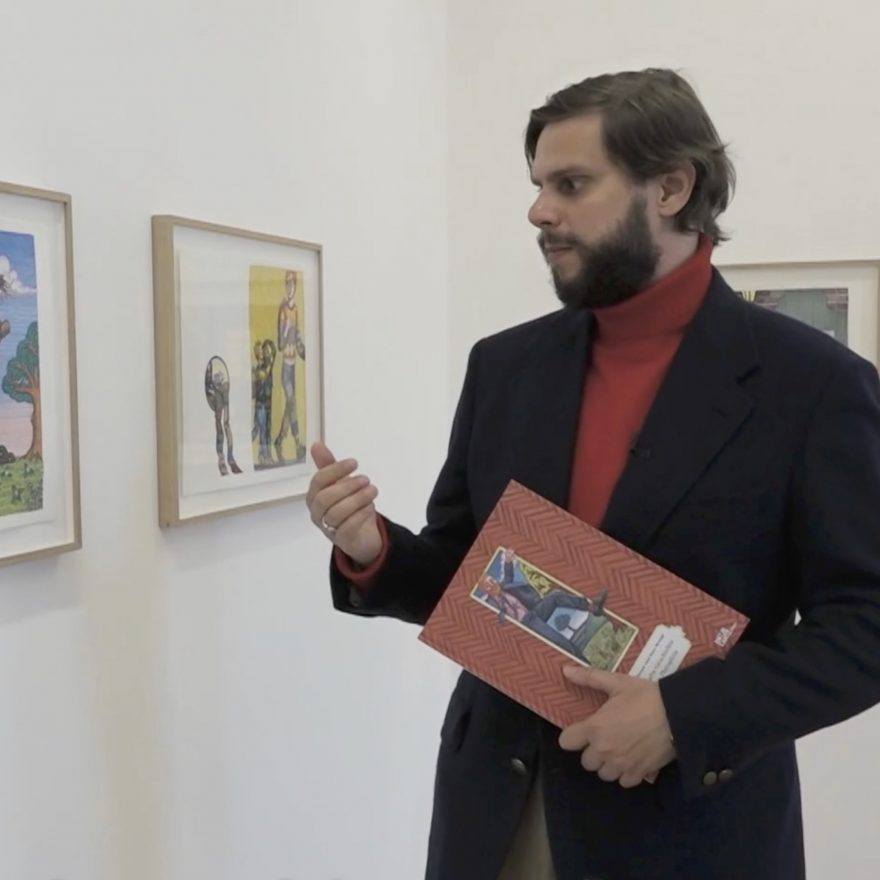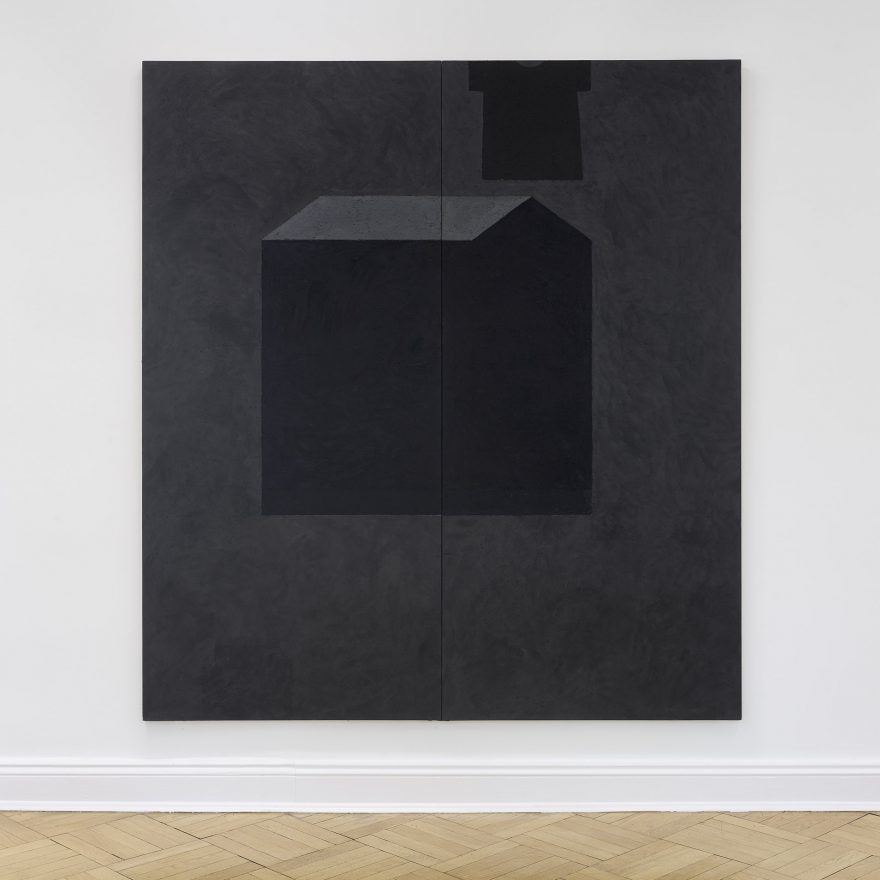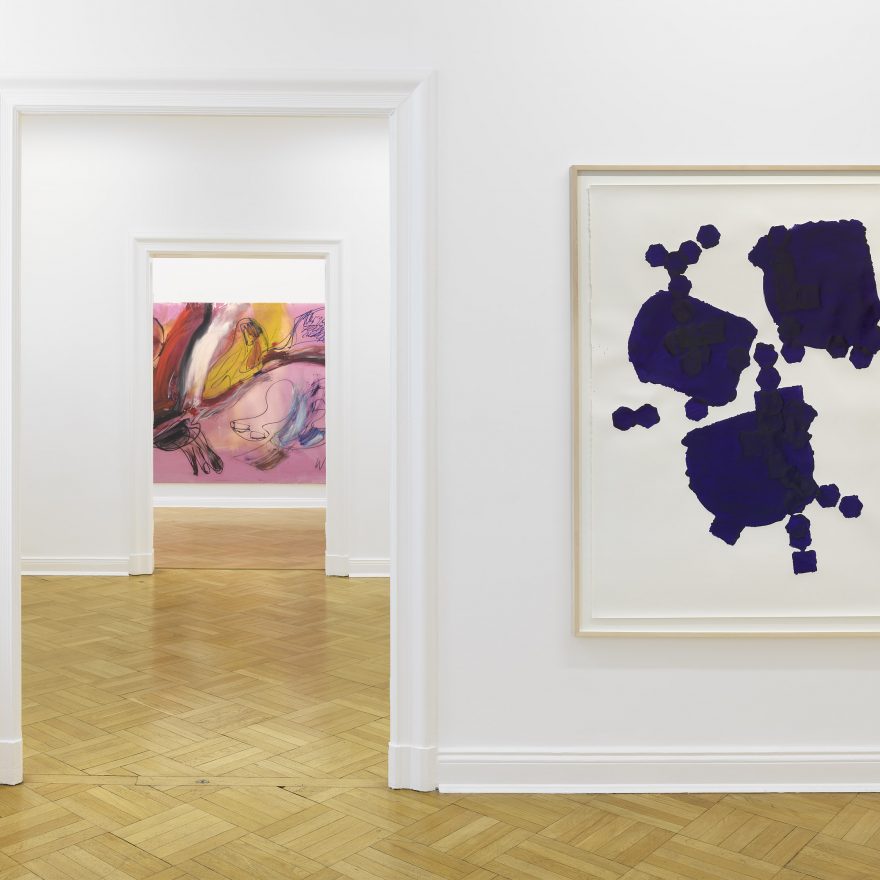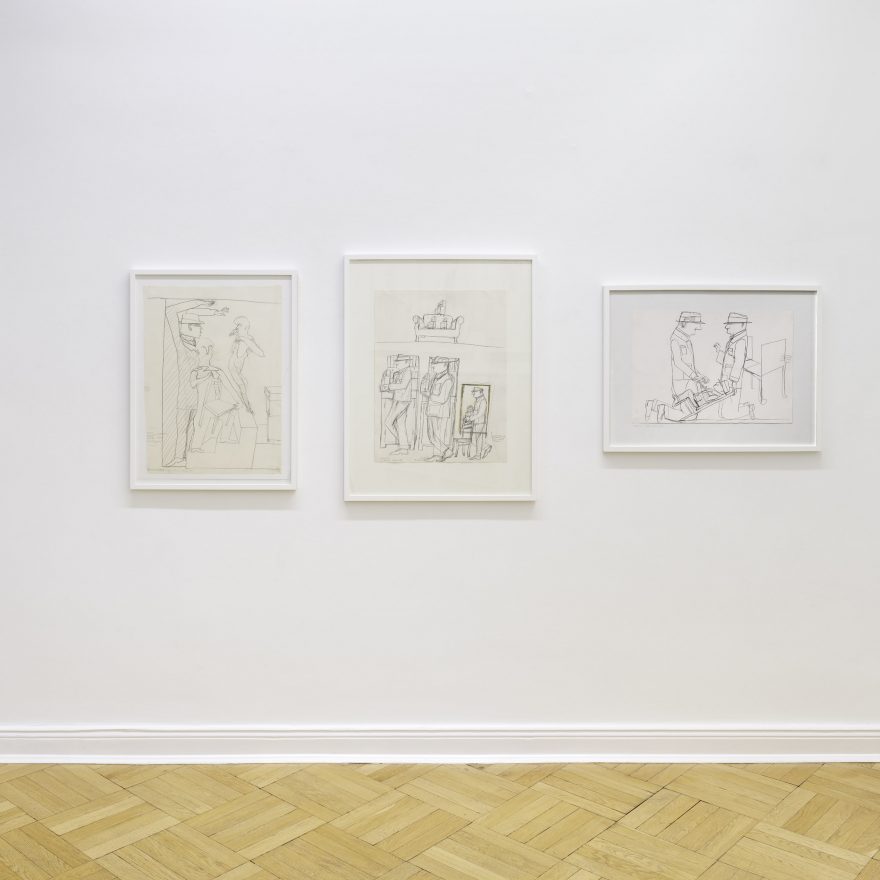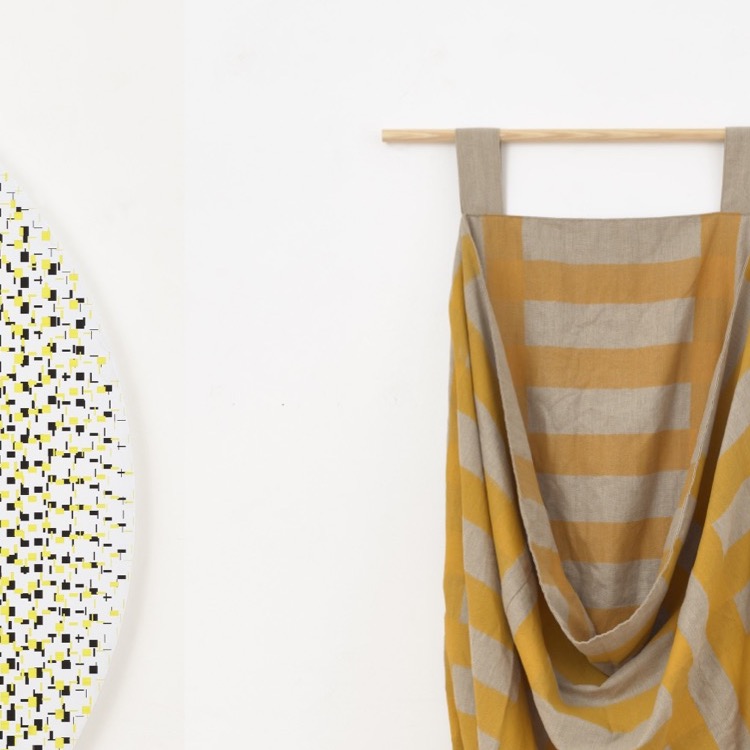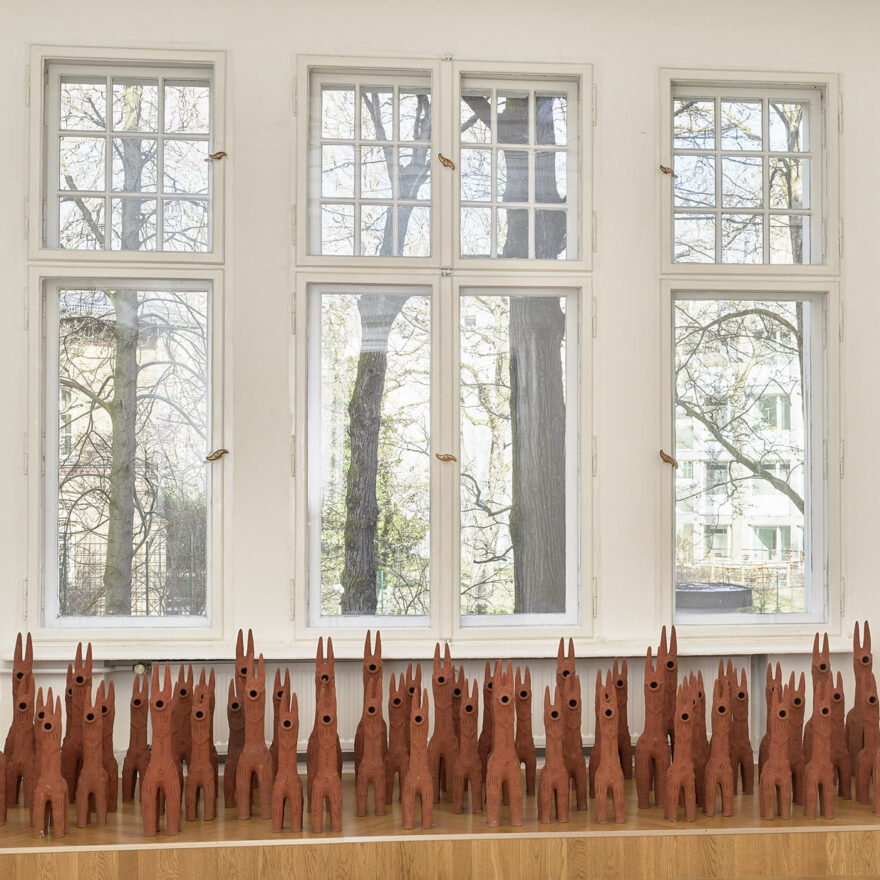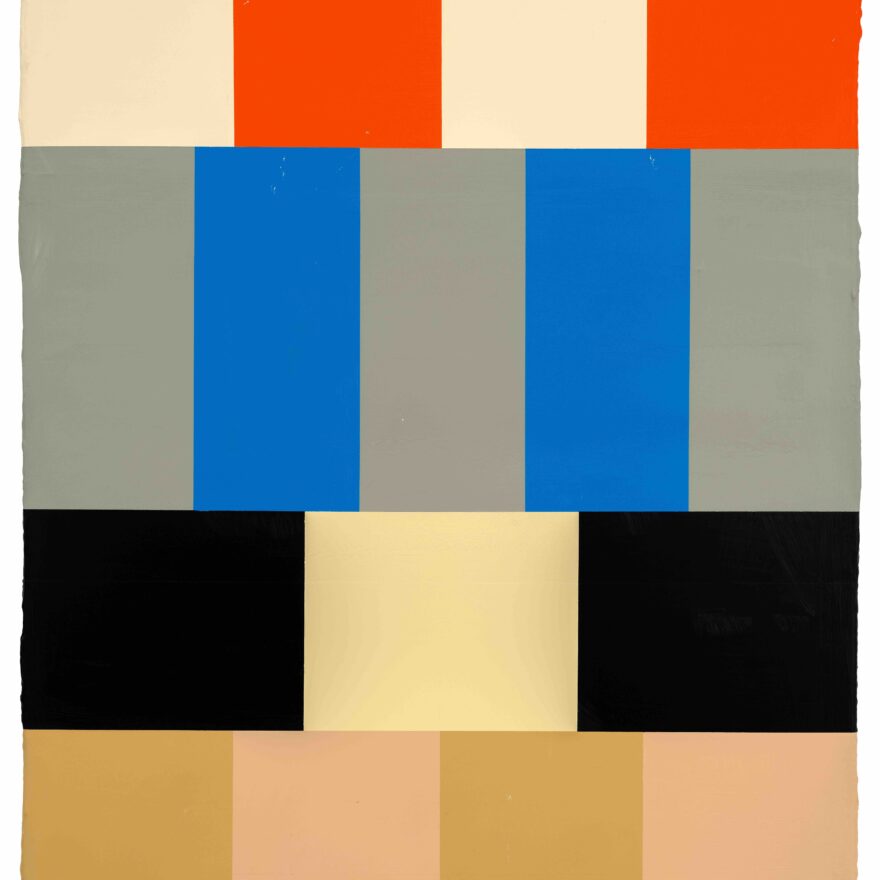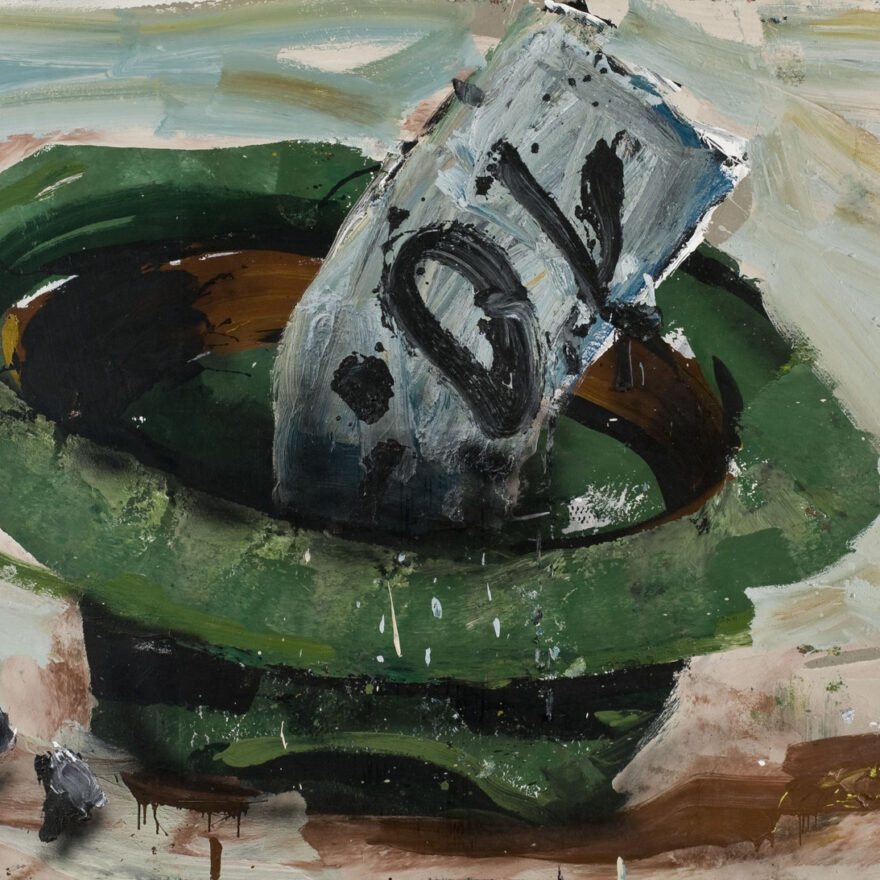Dieter Krieg and works by William N. Copley and Peter Dreher
Leise Ähnlichkeit
2 MAY until 28 JUN 2025
Opening – 2 MAY 2025, 6-9 pm
On the occasion of Gallery Weekend Berlin we are opening the exhibition “Leise Ähnlichkeit” (“Quiet Resemblance”), dedicated to the artists Dieter Krieg (1937-2005), William N. Copley (1919-1996) and Peter Dreher (1932-2020).

Dieter Krieg, Ohne Titel, 1991,
Acryl auf Leinwand, 220 x 400 cm, Foto: Frank Kleinbach
The exhibition is centred on the work of Dieter Krieg. His artistic practice is characterised by an intense exploration of literature, the visual arts, everyday life, and death. Dieter Krieg was a reader, and his painting reflects his affinity to the literature of his century, to Sartre and Beckett, Schmidt and Flaubert, Musil and Jellinek, to name but a few. Klaus Gallwitz says: “If I had to answer the question, is there a conceptual painter at all today, apart from the fact that painting always has to do with concepts, then I would attribute this unique characteristic to him, because his uneven thoughts and his great literary and philosophical background are never elevated in front of or behind the pictures, but always run through them. He could rely on his reserves.”
The Museum Küppersmühle in Duisburg is currently hosting a substantial solo exhibition by Dieter Krieg entitled “Maler Diebe und Gesindel”, featuring over 70 works on canvas, which will remain on display until 24 August.
The works of William N. Copley and Peter Dreher are similarly characterised by a profound intensity in their confrontation with the mundane and their endeavour to discern its significance. We contrast Dreher’s almost monkishly evocative and repetitive painting of glasses, keys and the sky with Copley’s sensually uninhibited depiction of people and their surroundings in all their abysses and joys.

Dieter Krieg, Ohne Titel, 1987,
Acryl auf Leinwand, 180 x 245 cm

